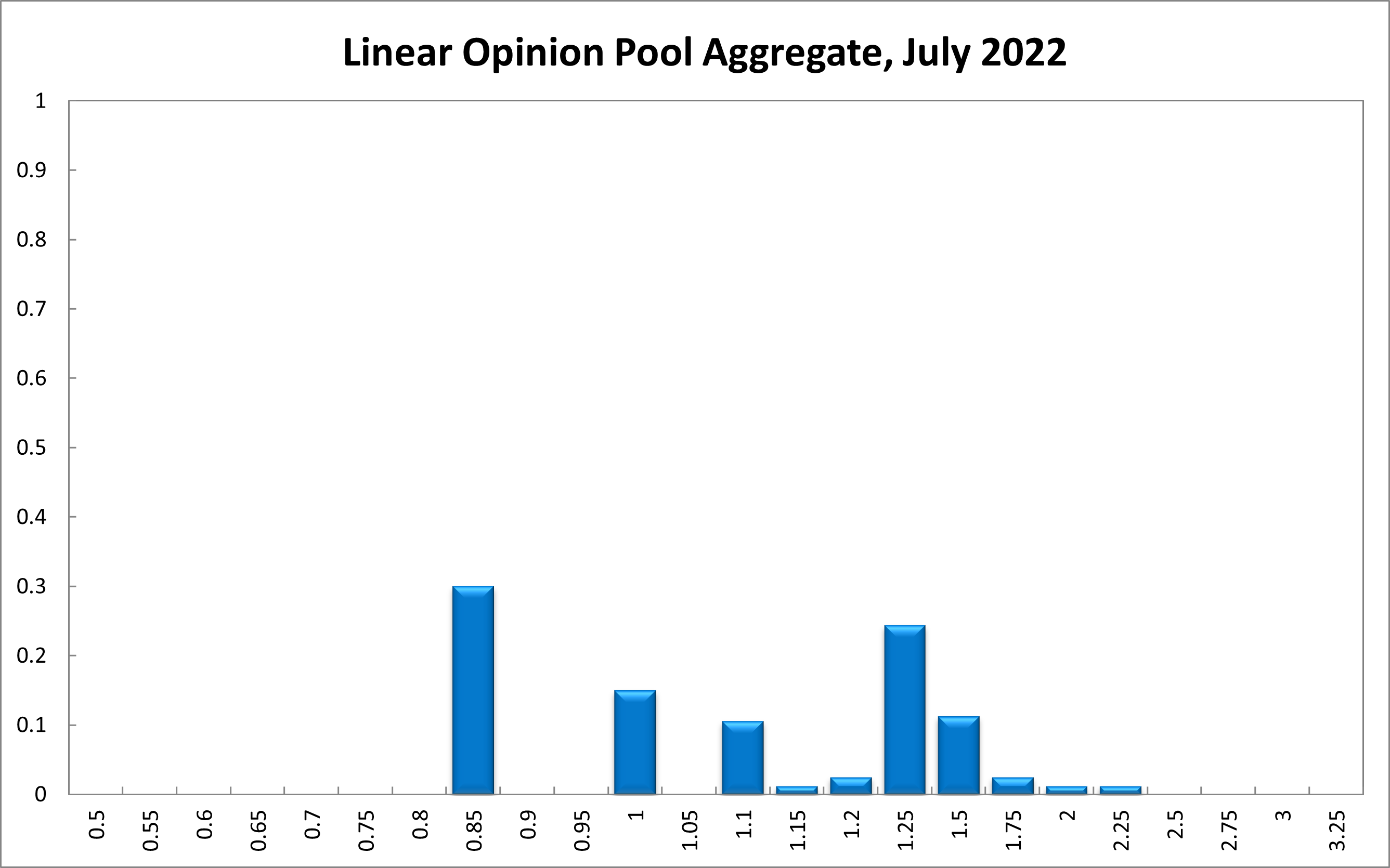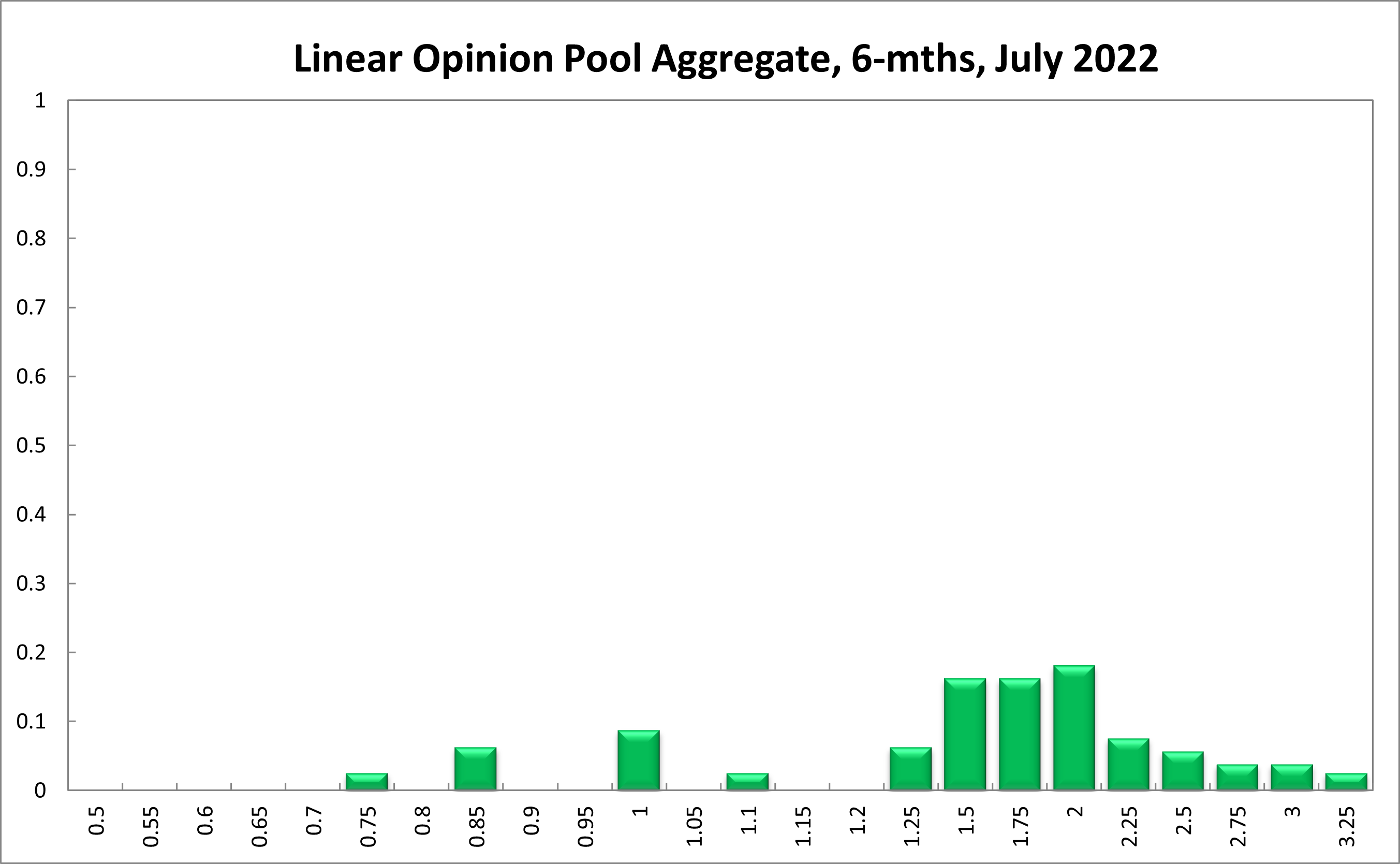Aggregate
Shadow Board Recommends Yet Another Rate Rise
A tight labour market and high capacity utilisation rate, as well as substantive supply-side constraints, point to a further increase in the (headline) CPI inflation rate later this year, above the most recent reading of 5.1% (Q1 of 2022). The current environment, in which demand is strong and supply hampered, leave little option for the RBA but to increase interest rates, if it wants to bring inflation back into the mandated target band of 2-3%. This is clearly the view of the RBA Shadow Board, which is 70% confident that the overnight rate should be raised to above the current setting of 0.85%, whilst only attaching a 30% probability that keeping the overnight rate on hold this round is the appropriate policy.
The Australian labour market statistics remain strong. The official ABS (seasonally adjusted) unemployment rate remained steady at 3.9% in May, as predicted. The youth unemployment also kept steady, at 8.8%. Encouragingly, total employment increased by more than 60,000, with nearly 70,000 full-time positions filled. The labour force participation rate increased 0.3 percentage points, to 66.7%. The underemployment rate also improved noticeably; it fell from 6.1% to 5.7%, while monthly hours worked increased yet again, by 17 million, or 0.9%. Other indicators such as job vacancies and job advertisements also improved, underlining the remarkable strength of the Australian labour market. What remains unclear at this stage is the extent to which the labour market tightness will lead to wages growth. Most recent data, which is still from Q1 of 2022, shows that real wages are contracting. Unless the inflation rate quickly settles down inside official target band, which looks unlikely, nominal wages should continue to rise to make up for lost ground.
The Aussie dollar lost 4 US¢ since last month, finishing the second quarter just above 68 US¢. Yields on Australian 10-year government bonds have consolidated after the recent steep rise, equalling 3.47% on 1 July. Yield curves retain their normal convexity, and interest rate spreads, especially at longer term maturities (e.g. 10-year versus 2-year) have remained roughly stable. Australian stock prices continued their broad decline, in tune with global share prices: the S&P/ASX 200 stock index ended the past month below 6,600, some 650 points lower than a month earlier.
The challenges for the global economy are not going away any time soon: commodity shortages, high energy prices, inflation, disrupted global supply chains, the Ukraine war, Covid-19, natural disasters. Most OECD central banks are expected to lift policy rates by substantial amounts in order to curb inflation. In this environment it will be difficult for the RBA not to follow suit.
The inflation risks and wider concerns about the economy manifest in a further slide in consumer confidence: the Melbourne Institute and Westpac Bank Consumer Sentiment Index dropped for the seventh month in a row, to 86.35 in June. Retail sales basically remained flat, while private sector credit growth slowed slightly. Business confidence likewise suffered; NAB’s index of business confidence deteriorated from 10 to 6 in May, and the services PMI dropped from 57.8 to 49.2 in the same month. The manufacturing PMI, on the other hand, improved slightly, for the month of June. The capacity utilisation rate increased again, by more than a full percentage point, to 84.95%. The Westpac-Melbourne Institute Leading Economic Index fell by a mere 0.06% year-on-year, based on its most recent reading in May. Its six-month annualised growth rate declined further, to a paltry 0.58% in May. The S&P Global Australia Composite PMI was unable to regain any strength after its recent drop. The weak consumer and business confidence numbers stand in contrast to the strong current economic indicators, a difficult situation to navigate for policymakers.
Two months ago the Reserve Bank of Australia embarked on a tightening cycle after the official cash rate target stood at the historically low level of 0.1% for one-and-a-half years. For the current (July) round, the Shadow Board is advocating that the overnight interest rate be raised further, above the current level of 0.85%, attaching a 70% probability that this is the appropriate policy stance. It attaches a 30% probability that keeping the overnight rate on hold is the appropriate policy and a 0% probability that a decrease is appropriate.
The probabilities at longer horizons are as follows: 6 months out, the confidence that the cash rate should remain at the current setting of 0.85% equals 6%; the probability attached to the appropriateness of an interest rate decrease equals 3%, while the probability attached to a required increase equals 91%. One year out, the recommendations are similar. The Shadow Board members’ confidence that the cash rate should be held steady equals 3%. The confidence in a required cash rate decrease, to below 0.85%, is 6% and in a required cash rate increase, to above 0.85%, equals 92%. Three years out, the Shadow Board attaches a 0% probability that the overnight rate should equal 0.85%, a 3% probability that a lower overnight rate is optimal and a 97% probability that a rate higher than 0.85% is optimal.
The range of the probability distributions for the current and 6-month recommendations, widened considerably, reflecting a reassessment by at least some members of the tail risks: for the current setting, it extends from 0.85% to 2.25%, and for the 6-month horizon it extends from 0.75% to 3.25% (compared to a range of 0.1 to 2% in the previous round). The range for the 12-month horizon expanded even more – it now extends from 0.5% to 4.5% - and likewise for the 3-year horizon, which now extends from 0.5% to 5.5%.




Updated: 17 August 2024/Responsible Officer: Crawford Engagement/Page Contact: CAMA admin










